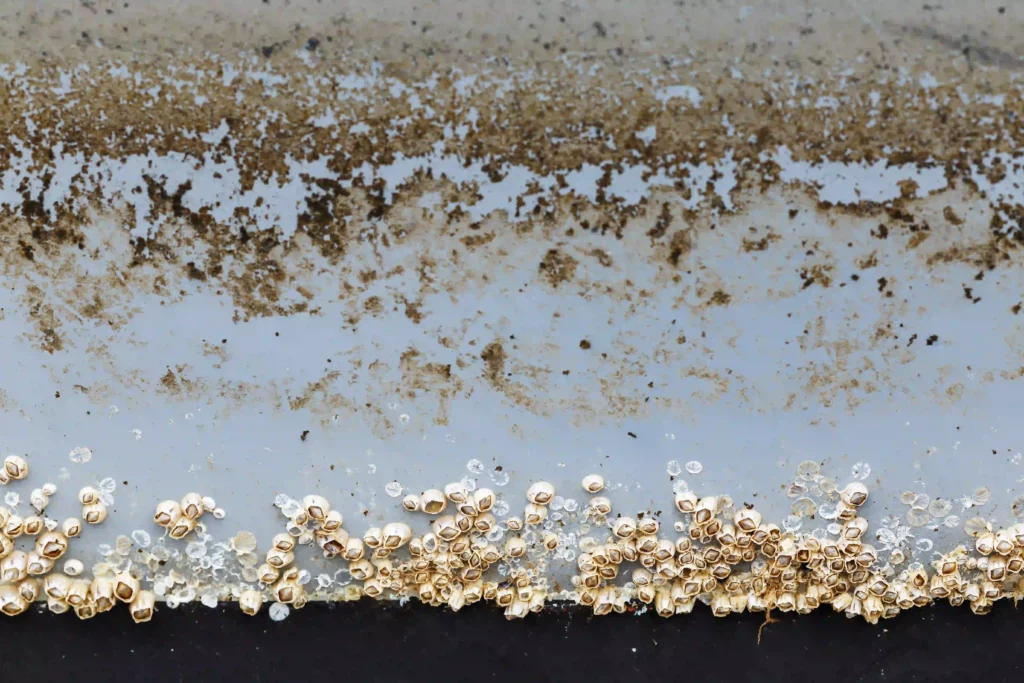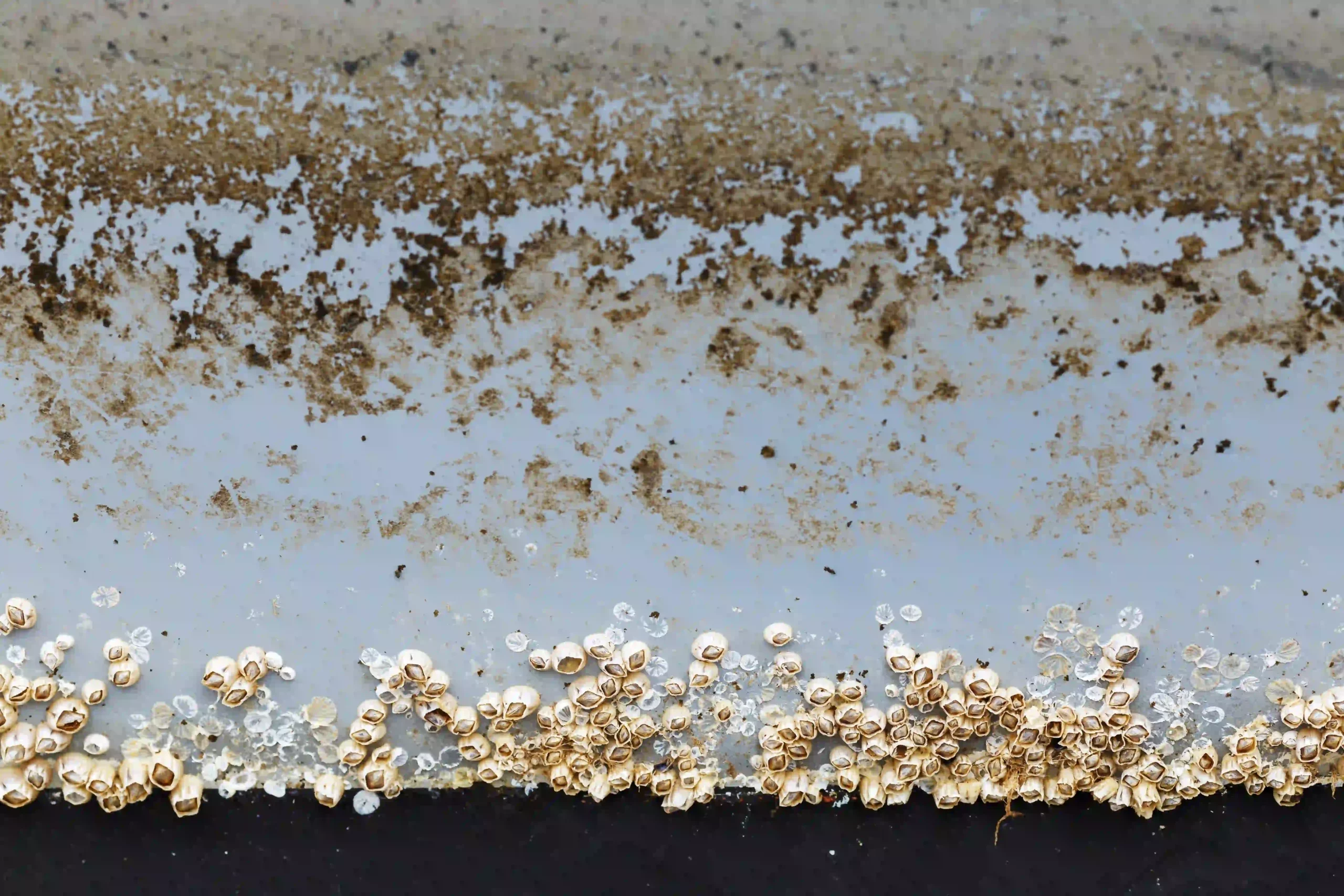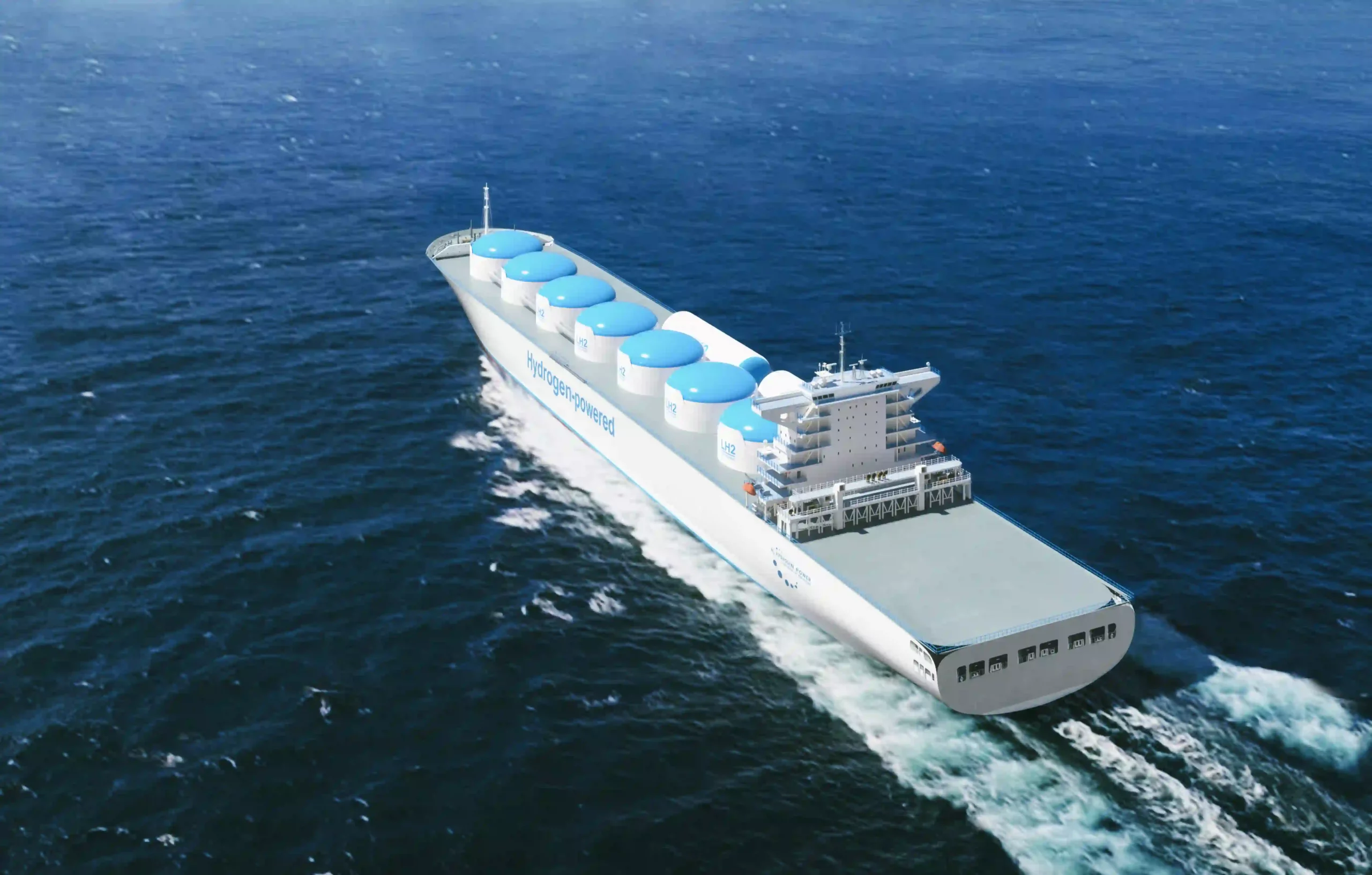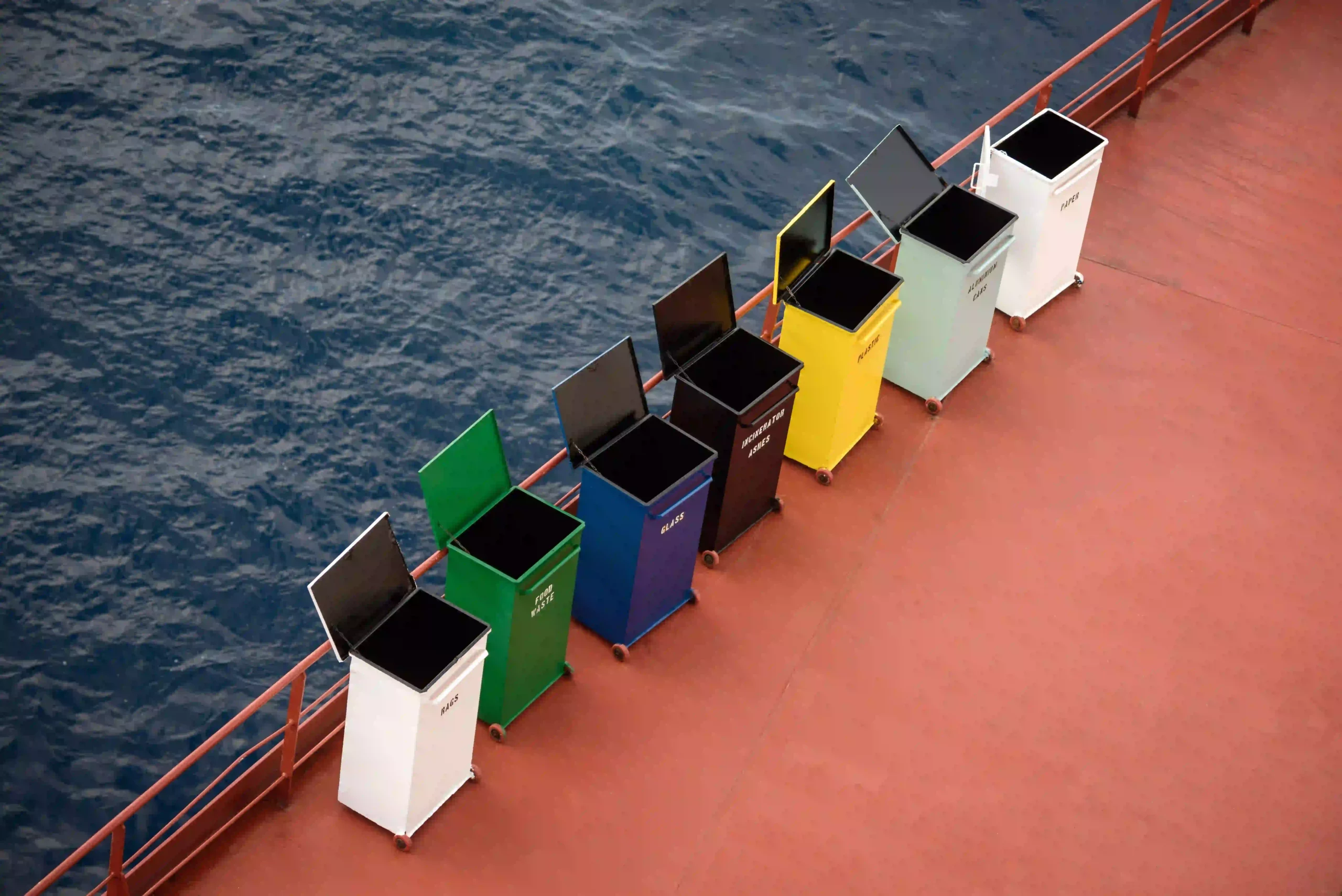Introduction
Marine biofouling, as defined by the Marine Environment Protection Committee (MEPC) in their latest resolution, refers to the accumulation of aquatic organisms such as microorganisms, plants, and animals on surfaces and structures immersed in or exposed to the aquatic environment. This phenomenon can include pathogens and significantly affects marine operations. The purpose of this blog post is to shed light on marine biofouling, its implications, regulatory measures, and effective management strategies to minimize its impact.
Understanding Marine Biofouling
Marine biofouling is a natural process where organisms adhere to submerged surfaces. It begins with the initial attachment of bacteria and other microorganisms, forming a biofilm. This biofilm then attracts more complex organisms such as algae, barnacles, and mollusks. The biofouling process can be divided into primary (microfouling) and secondary (macrofouling) stages, with each stage compounding the adherence of different types of organisms.
Microfouling involves the accumulation of bacteria and diatoms, creating a slimy layer on surfaces. This stage is crucial as it sets the foundation for macrofouling, where larger organisms like seaweed, barnacles, and mussels attach themselves. The presence of these organisms can significantly alter the properties of the surfaces they inhabit, leading to various detrimental effects.
Impact of Marine Biofouling
The consequences of marine biofouling are far-reaching, impacting both economic and environmental spheres. Economically, biofouling increases the operational costs of maritime industries. Fouled hulls create more drag, reducing vessel speed and increasing fuel consumption. This inefficiency not only raises costs but also leads to higher greenhouse gas emissions. Studies estimate that biofouling can increase fuel consumption by up to 40%, significantly impacting the shipping industry’s carbon footprint.
Environmentally, biofouling facilitates the transfer of invasive aquatic species, disrupting local ecosystems. When ships travel from one region to another, they inadvertently transport non-native species attached to their hulls. These invasive species can outcompete local organisms, leading to biodiversity loss and altering habitat structures. Additionally, biofouling can degrade underwater infrastructure, such as pipelines and offshore platforms, necessitating frequent maintenance and replacement.
Regulations and Guidelines
To address the challenges posed by marine biofouling, international regulations and guidelines have been established. The International Maritime Organization (IMO) has been at the forefront, developing comprehensive strategies to mitigate the issue. One significant initiative is the 2023 Guidelines for the Control and Management of Ships’ Biofouling to Minimize the Transfer of Invasive Aquatic Species, commonly known as the Biofouling Guidelines. (Resolution MEPC.378(80))
These guidelines provide a framework for the shipping industry to implement biofouling management practices, emphasizing preventive measures and regular maintenance. Compliance with these guidelines helps reduce the risk of invasive species transfer and promotes environmentally sustainable shipping practices. The IMO also encourages the development and use of innovative technologies to improve biofouling management.
Biofouling Management Strategies
Effective biofouling management requires a combination of preventive measures and advanced technologies. Regular cleaning and maintenance of ship hulls are essential to minimize biofouling accumulation. This can be achieved through mechanical cleaning, such as brushing or scraping, and the use of antifouling coatings. These coatings are specially designed to prevent organisms from adhering to surfaces, reducing the frequency of cleaning.
Emerging technologies are also playing a crucial role in biofouling management. Ultrasonic antifouling systems use sound waves to create vibrations on the hull surface, deterring the attachment of organisms. Additionally, advanced materials like biomimetic surfaces mimic the natural antifouling properties of marine organisms, providing a non-toxic solution to biofouling.
Innovations in robotic cleaning technologies offer another promising approach. Autonomous underwater robots equipped with brushes and sensors can perform regular hull inspections and cleanings, reducing the need for dry-docking and manual labor. These robots can operate continuously, maintaining hull cleanliness and improving vessel efficiency.
Conclusion
Marine biofouling presents significant challenges to the maritime industry, affecting economic performance and environmental sustainability. Understanding the mechanisms and impacts of biofouling is crucial for developing effective management strategies. International regulations and guidelines, such as those by the IMO, play a vital role in promoting best practices and innovative solutions.
By adopting preventive measures, leveraging advanced technologies, and adhering to regulatory frameworks, the maritime industry can mitigate the adverse effects of biofouling. This not only enhances vessel performance and reduces operational costs but also contributes to the preservation of marine ecosystems and the global environment.
Disclaimer
The information provided is for general informational purposes only and should not be interpreted as professional advice. Readers are encouraged to conduct further research and consult with relevant experts before making any decisions or taking any actions based on the content of this article. While every effort has been made to ensure the accuracy and reliability of the information presented, no guarantee is made regarding its completeness, timeliness or suitability for any particular purpose. The author assumes no responsibility or liability for any errors or omissions in the content of this article.











